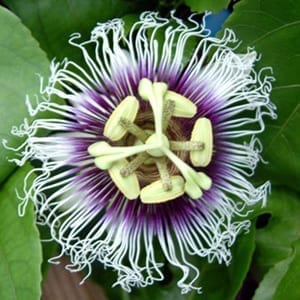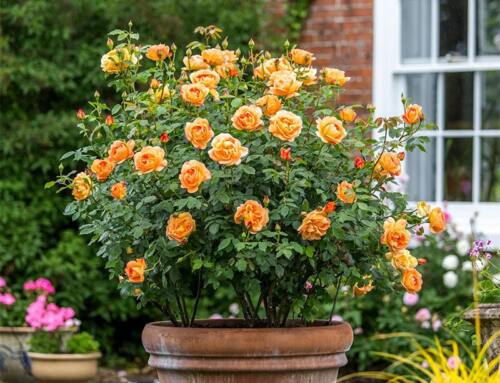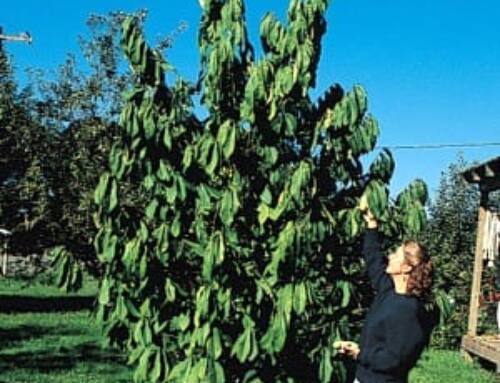Six Creative and Surprising Tips for Growing and Designing with Vines
From Clematis to honeysuckle, passionflowers to Wisteria, there is so much that vines have to offer in the garden. They are the original “living walls” able to climb up trellises or to attach to surfaces. They are can add additional layers of colour by growing them in large shrubs and small to medium sized trees. Here are some tips for growing vines successfully and using them to best effect in your garden and on your patio:
Grow Vines Together
You can plant multiple vines together in the same location. They will grow into the same shrub or trellis and intermingle with each other. I once had five different Clematis growing up the same trellis. The display was magical with a constantly changing tableau of colours.
You can also choose different vines with different flowering seasons and choose a mix of evergreen and deciduous species and cultivars so your display looks good year round. For instance, try planting these three Clematis together for an amazing display: 1. an evergreen Clematis armandii to make your display look good year round and give you fragrant, early season flowers, 2. any large flowered Clematis hybrid such as ‘Jackmani’ or the Vancouver or Evison series to give you mid spring through summer colour, and 3. a ‘Sweet Summer Love’ to give you masses of small, fragrant, purple and magenta flowers in late summer and fall. Or if you want bright colours, choose a Clematis tangutica or a sweet autumn Clematis as your option #3 for masses of late season colour in yellow or white, respectively.
You can also mix different vines together. Honeysuckle and Clematis are a natural combination with the contrast in the large Clematis flowers and the clusters of small, tubular, fragrant honeysuckle flowers. Or, for a more tropical look combine a passionflower with a honeysuckle!
Grow Vines In Containers
Vines are very adaptable and perform very well in containers. Choose the size of the pot based on the eventual size of the vine. Plant up the pot with a variety of small shrubs and perennials to shade the roots of your vine and make the display more beautiful. Give your vine a trellis or put the pot in front of a drain spout, a railing, or another feature it can grow up.
Grow Vines More Naturally
We usually think of growing vines on trellises but in the wild there aren’t any trellises! In their natural habitats, vines climb up nearby shrubs and trees. You can plant vines at the base of your medium to large shrubs or small trees and allow them to grow into the branches. You’ll get extra beauty in the same location and an extended period of interest for your shrub or tree.
Make Your Vines Hardier
To make Clematis and passionflowers hardier, you can bury the stems four inches deep. The plants will then root in along the stems creating a strong mass of stems and roots that can rebound if the top growth is damaged by a cold winter. For Clematis you should only bury the stems once the bottom four inches have turned woody. For passionflowers, you can do it anytime.
Use Vines As Groundcovers
In the absence of trellises or woody plants to climb, vines will clamour across the ground. In nature you see this all the time. Many vines can be used as groundcovers including Clematis , star jasmine ( Trachelospermum) , passionflowers, silver lace vine ( Polygonum aubertii ), hops ( Humulus lupulus ), Virginia creeper ( Parthenocissus ), and honeysuckle ( Lonicera ). In general vines are best used as groundcovers when you have some space though some dwarf vines like Clematis’Bijou’ and some of the short Evison and Kivistik cultivars can be used in smaller spaces. Star jasmine ( Trachelospermum ) would also be versatile for smaller spaces.
Grow Vines For Food
We have lots of cool options for vines that will produce fruit. We have numerous species and cultivars of fuzzy kiwi and hardy kiwi. And we also have two passionflowers that produce edible fruit. Passiflora edulis ‘Possum Purple’ is a self-fertile cultivar of the main species that produces the classic passionfruit. (These are not ready yet but we can put you on the wish list if you would like one.) Passiflora incarnata , the maypop, is a zone 5 hardy passionflower that also produces edible fruit for use in jams, desserts, and juices. Schisandra grandiflora ‘Apricot Blush’, the strawberry vine, and Schisandra chinensis , the magnolia vine, are unusual vines that produce berries that can be made into delicious juices and preserves.
Have fun using these ideas to integrate more vines and more beauty into your garden or patio! We have tons of vines and other selections of plants in stock now at Phoenix Pernnials. Come down and explore all the possibilities.





